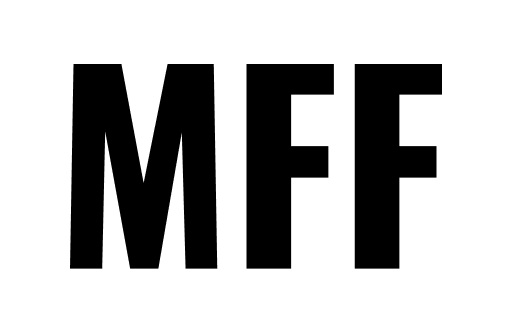The Cross That Carries Peace
How a Ukrainian Sculpture Became a Symbol of Christian Unity
By William Beischel
A Ukrainian Voice in the Vatican: A Common Easter Date Born of a War-Torn Land
In the early summer of 2025, the world witnessed the most significant ecumenical shift in a century. The newly elected Pope Leo XIV endorsed the idea of establishing a single date for Easter celebrations among all Christian denominations—Catholics, Orthodox, and Protestants. While this discussion in the Vatican may seem unexpected, the roots of the initiative lead not to Rome, but to Ukraine.
From a land torn by war and tragedy—yet united by hope—a symbolic message reached the Papal Throne in late 2024: the art installation “Cross of Peace.” Far from a mere artistic gesture, this sculpture has become, in the eyes of many art historians and theologians, a spark for a profound shift in the Christian world’s consciousness.
A Sculpture of Pain and Hope: The ‘Cross of Peace’ as a Modern Golgotha
This monumental four-meter-tall composition, created by American artist of Ukrainian descent Sergey Melnikoff (MFF), is quite literally forged from war. The cross itself is made from metal pipes salvaged from the ruins of destroyed homes in Kharkiv and Odesa—places wiped off the map by Russian shelling. These pipes—once part of homes filled with laughter, music, and life—have become the foundation for a symbol of resurrection, faith, and reconciliation.
A unique element is the Crucified Christ, crafted from more than 20,000 fragments of artillery shells and mines. Each no bigger than a child’s fingernail, these shards form one of the most arresting works of contemporary Christian art. The sculpture’s surface is covered in 999.9 fine gold, symbolizing not only holiness but the transformation of suffering into light.
A Symbol That Speaks in the Language of Three Christian Traditions
In its design, the Cross of Peace embodies true interdenominational respect. The horizontal beam follows the tradition of Orthodox and Protestant iconography, while the vertical finial aligns with Catholic norms. This is not a mere aesthetic gesture—it is a visual and spiritual bridge, consciously built by the artist between Christianity’s three great branches.
Such a structure is more than art; it is a theological manifesto: Christianity may take many forms, but its center remains the Crucifixion and the Resurrection.
From Kharkiv to the Vatican: The Sculpture That Changed History
The creation of the Cross of Peace involved a dedicated team of artisans and professionals. Viktor Bielchyk of Odesa played a crucial role in the metalwork, ensuring top-tier execution. Meanwhile, Sergey Naumenko and Vitalii Zhuk of Kyiv’s “Metall Chemie” provided the gold plating for the life-sized figure sculpted from 20,000 intricate shards—based on nothing but the artist’s word that one day he would repay them. Covered it in 999/9 gold — unpaid, but unwavering. This wasn’t commerce. It was conviction.
The sculpture has already become a landmark in Ukraine’s cultural landscape, exhibited in major cities from Ivano-Frankivsk to Kharkiv, drawing thousands. Its transformative power lies not only in its visual presence but in its emotional and spiritual depth. It moves people. It calls not just for tears—but for action.
Easter as a Single Date: A Return to the Nicene Vision
Pope Leo XIV’s declaration came during the commemoration of the 1700th anniversary of the First Council of Nicaea (325 AD). That council first attempted to set a unified Easter date: the first Sunday after the spring full moon. But the Julian and Gregorian calendars eventually drove a wedge into this unity.
Today, almost two millennia later, there is no technical reason not to return to a shared date. But for that, a sign is needed. And the Cross of Peace has emerged as such a sign.
Ukraine as a Spiritual Broadcaster
A letter sent to Pope Francis on December 25, 2024, by the International Foundation “Soul of Ukraine,” presented the Cross of Peace not only as a work of art. It carried an ecumenical appeal—to install the sculpture in St. Peter’s Square during the Easter Mass and call all Christian confessions to celebrate Easter together on April 20, 2025, a date that, by a rare coincidence, aligned across all churches.
Though Pope Francis’s illness prevented the plan’s fulfillment in 2025, within months his successor embraced the Ukrainian message, renewing hope that the initiative would not be lost in the Vatican’s bureaucratic maze.
The Cross as a Banner of a New Era
Can a work of art change the course of history? The Cross of Peace proves it can. It has already inspired art critics and theologians alike and become a catalyst for global spiritual dialogue. Some call it a new “seventh wonder of the world”—and that’s not an exaggeration.
Its value is not in its gold or in artistic audacity. Its power lies in unity. It speaks the language of suffering, prayer, and faith. And if, in the years to come, Christians around the world gather for a shared Easter, it will be worth remembering: this journey began in Ukraine.
Post Scriptum: A Spiritual Beacon of the 21st Century
When the Cross of Peace stands in St. Peter’s Square—whether in 2026 or beyond—it will not be merely an exhibit, but a revelation. Its shadow will fall across millions of pilgrims as a reminder: Christianity is not a battle of calendars—it is sacrifice, forgiveness, and love. And that, in the end, is what Easter truly means.
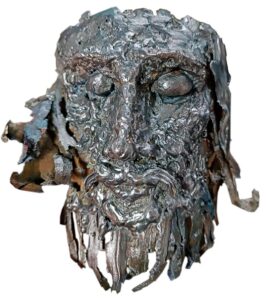
The Art of MFF | Head of the sculpture “Golden Crucifix,” after cleaning prior to electroplating with gold.
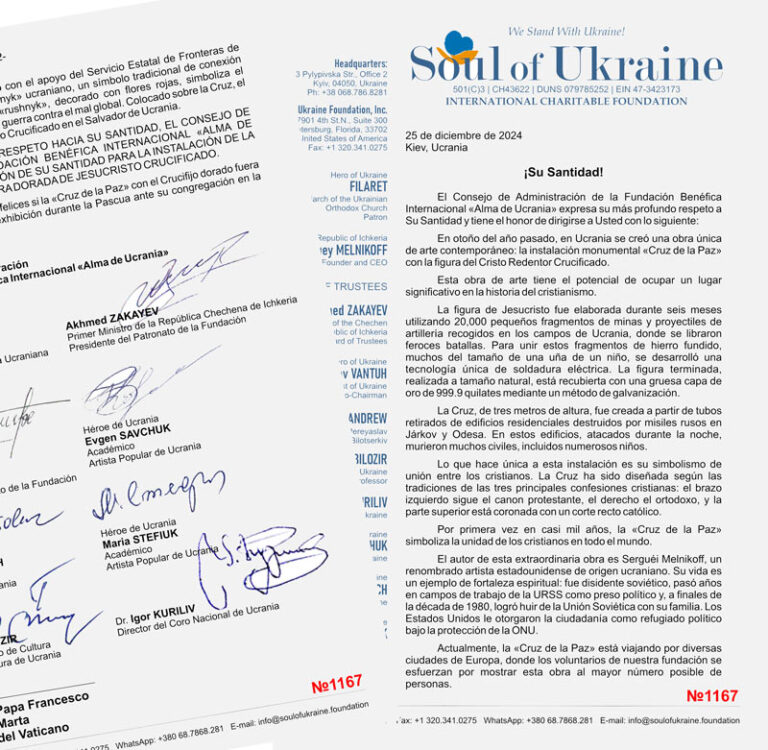
Letter dated December 25, 2024 (in Italian), from the Board of Trustees of the International Charitable Foundation “The Soul of Ukraine” to His Holiness Pope Francis, proposing the presentation of the “Cross of Peace” on St. Peter’s Square at the Vatican on Easter, April 20, 2025.
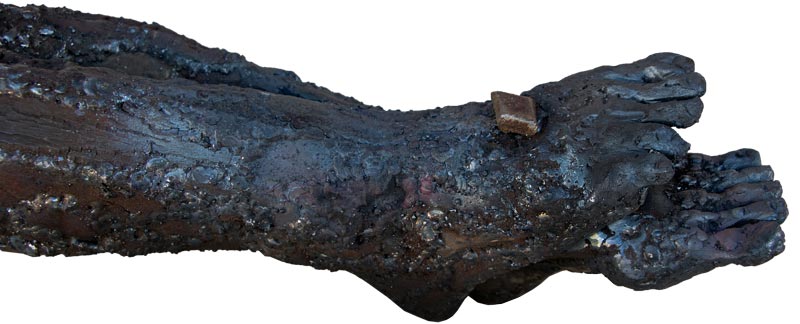
The Art of MFF | The sculpture “Golden Crucifix.” А fragment of the lower part of the feet before cleaning prior to electroplating with gold.
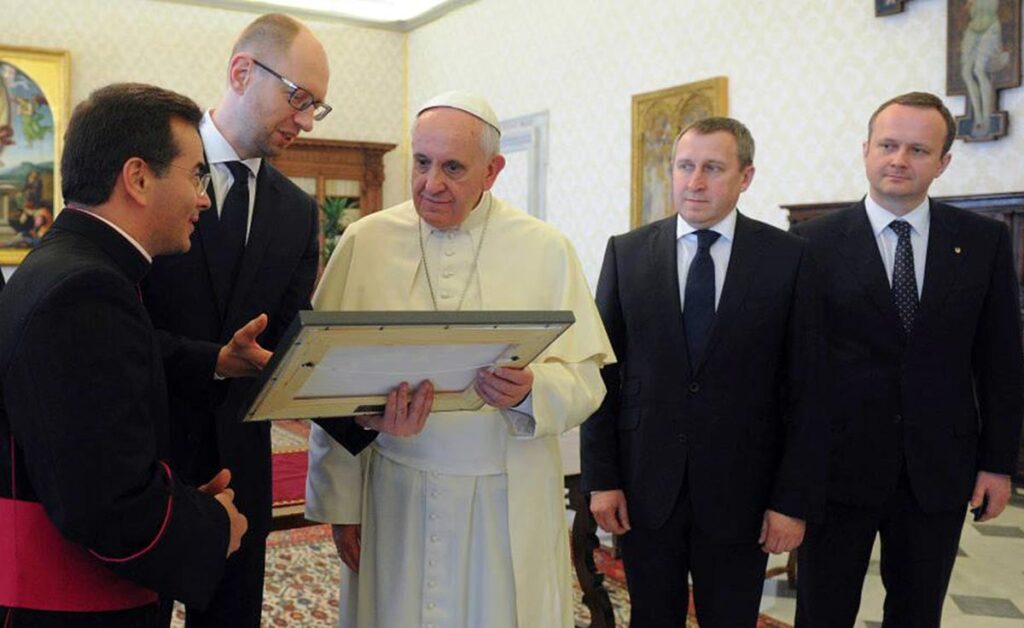
Ukrainian Prime Minister Arseniy Yatsenyuk presents a photograph by Sergey Melnikoff to Pope Francis during an official meeting at the Vatican.
Vatican, 2014.
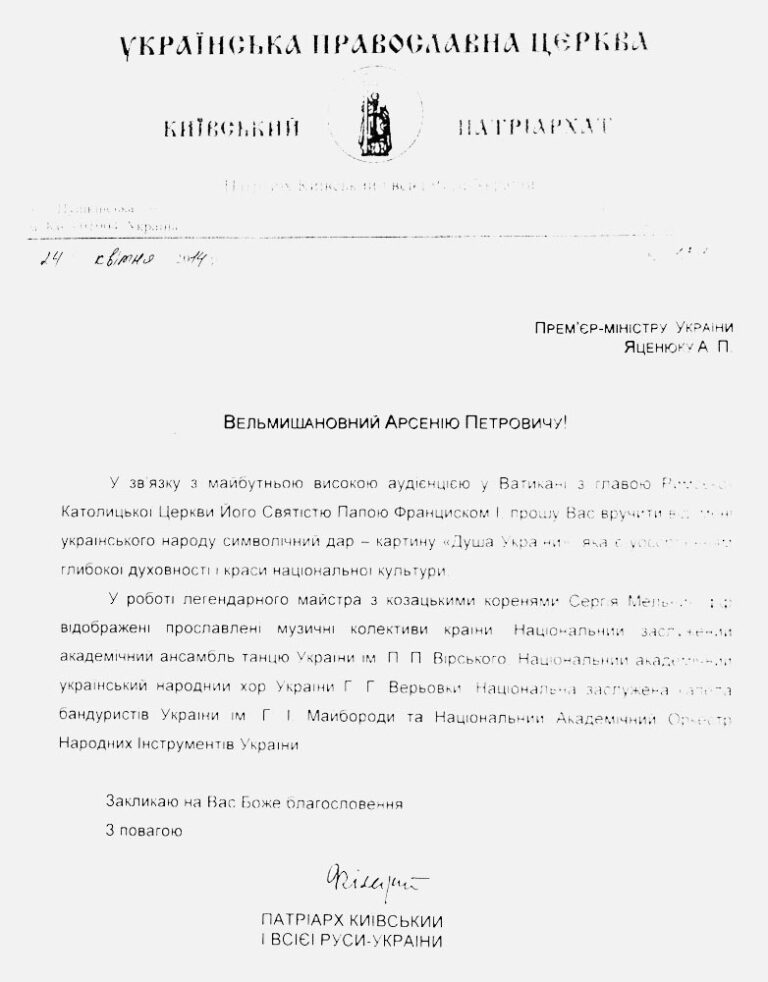
Letter dated April 24, 2014, from Patriarch Filaret of the Ukrainian Orthodox Church to Prime Minister Arseniy Yatsenyuk, with a blessing to present a photograph by Sergey Melnikoff to Pope Francis on behalf of the Ukrainian people during the official visit to the Vatican.
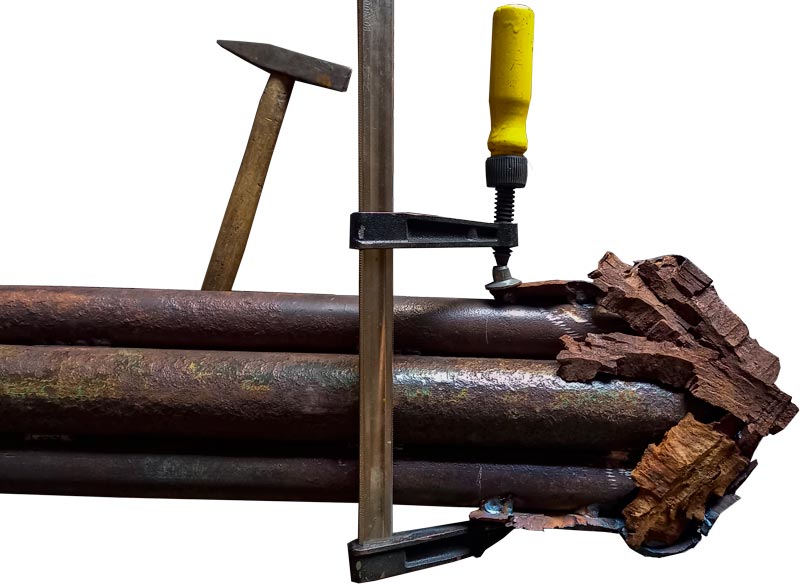
The Art of MFF | The “Cross of Peace” in the process of creation.
